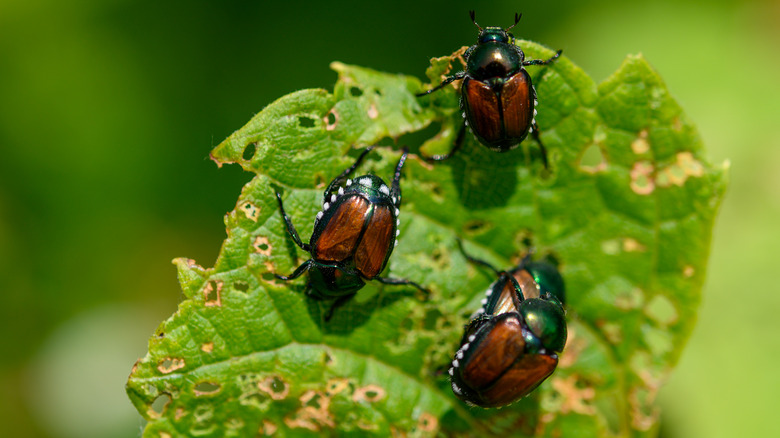Japanese beetles, easily recognized as one of the more destructive and harmful types of pests that can invade your yard throughout the growing season, are often so problematic that gardeners place traps in their spaces to get rid of them. The problem is these traps, which often use scent to draw in the pests, do more damage to your garden than just leaving them be.
These traps are designed to draw in beetles by using either floral scents, attracting both males and females, or pheromones, which attract just males. Once in the trap, they cannot leave. However, that scent is so strong and the beetles’ sense of smell is so powerful that you’re going to draw in beetles from throughout the neighborhood — even up to several miles away — to your yard. The end result could be a yard overrun with these pesky beetles that will ultimately still munch on your vegetables and flowers.
According to the U.S. Department of Agriculture, these traps really do work, capturing as many as 75% of the pests they attract. It’s the other 25% that’s problematic for the rest of your yard. Those that don’t get trapped are likely to feast on your vegetation, and since you may be drawing in far more beetles than would naturally be present, that’s going to worsen the situation. What’s more, at some point, you have to remove that trap and the beetles in it. How can you rid your garden of Japanese beetles, then?
What you really need to do to keep these beetles away

It’s crucial to be proactive about Japanese beetles because of how damaging they can be to even a moderately sized crop. They are not picky, either, meaning they will go after many types of crops in any given area. Luckily, you have a few other solutions to try besides the beetle trap.
One way to get rid of Japanese beetles is to simply spray them. Mix a batch of water and mild soap — just a few drops of soap, such as dish detergent, per cup of water — and fill a spray bottle. When you see the beetles lurking about, spray them with it. Alternatively, shake the bottle to produce a soapy, suds-filled bottle. Then, apply the suds to the surfaces of your plant leaves. If you’d prefer to use a commercial product, there are also a number of nontoxic, organic pesticides widely available. Just always be sure to follow the manufacturer’s recommendations.
A bit more of a hands-on method to getting rid of Japanese beetles is simply to remove them. That is, if you see them on a plant, pluck them up with a gloved hand or wipe them away and remove them from your garden. It’s far more labor-intensive, and it certainly will be impractical in the case of a large infestation, but this method can work. Also, consider planting an herb like catnip to keep Japanese beetles out of your garden.


